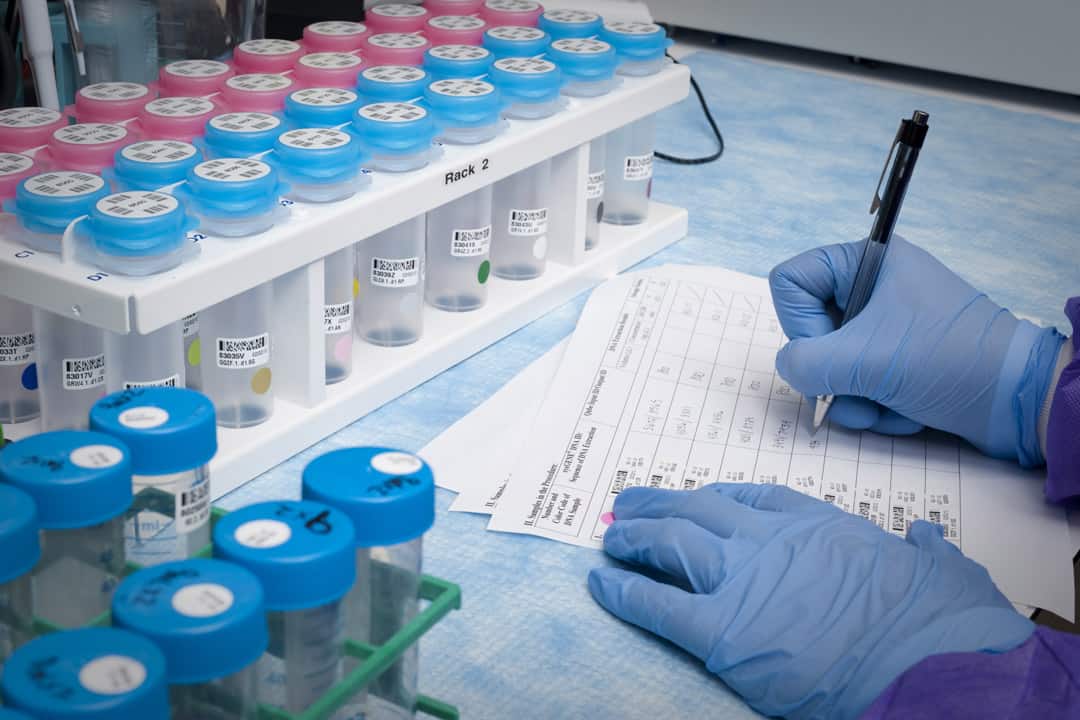Effective March 16, the University of Toronto cancelled all in-person undergraduate courses across its three campuses and moved to remote learning. This resulted in instructors scrambling to implement different teaching methods and shift to online teaching, which begs the question: how did U of T handle moving its lab courses online?
After all, culturing E. coli and organic synthesis can’t be done from the comfort of our often cramped homes. The Varsity contacted professors, teaching assistants (TAs), and deans to find out the innovations and challenges that COVID-19 closures brought about in courses on different campuses.
Virtual labs
Although most labs in courses offered by the Department of Chemistry were cancelled, Dr. Charlie Kivi, the lab coordinator for CHM151 — Chemistry: The Molecular Science, a first-year course at UTSG, opted to hold virtual labs.
Kivi used Quercus quizzes to distribute random data sets to each student from a data bank that he uploaded. Students then used their sample data to complete their lab reports, and the grading scheme was changed to reflect these predetermined results. Furthermore, Kivi noted that this shifted emphasis on writing was sensible, as it’s part of the Writing-Integrated Teaching (WIT) program.
“I chose to do this to ensure that students get feedback on their writing before heading into second year… With everything else going on this year I wanted to make sure that our students got the best start they could have for next year.”
Melanie Woodin, Dean of the Faculty of Arts & Science, echoed this sentiment in an email to The Varsity. “Lab work and learning is not all physical – there are always a lot of key tasks involving analysis, data mining, discussion and deliberation etc. It’s not ideal but I have heard from faculty members and students that by and large the online tools and resources available are working for them to stay connected.”
Shedding light on the challenges with making these changes, Kivi wrote: “It took some trial and error to get things working on Quercus but it all came together in the end. I am very fortunate that I had excellent TAs to lean on and the Quercus help team was invaluable in getting my random data quiz banks to actually work as intended under tight time constraints.”
Urine analysis in your bathroom and heart-rate measurements in the backyard
At UTSC, Dr. Jason Brown teaches BIOB32 — Animal Physiology Laboratory, in which the lab component is worth 50 per cent of the grade. To fulfill this requirement, students had three at-home experiments to complete. Two of these experiments were similar to what students would have done on campus and they were graded using the same standard as those for in-person labs.
For instance, a urine analysis experiment in the lab was replaced by an at-home experiment that involved students drinking different beverages — such as coffee and saltwater — and measuring their urine output. Students were able to conduct experiments using themselves as subjects, and collecting and analyzing real data.
Brown wrote to The Varsity, “In fact, I think my new ‘at-home’ experiment is even more thoughtfully-designed than the original experiment! So, in my opinion, students in BIOB32 are still getting the same experience they would have received via in-person labs. And they are still analyzing and thinking about data, which is a fundamental lab/research skill!”
“One student emailed me [to] express her gratitude for the ‘at-home’ experiments,” he continued. “She appreciated that the course was not changing in any radical way.”
However, Brown noted that these experiments were time-consuming to create: “it’s the time that it takes to write up these assignments so that students will be able to execute them without the usual supports.”
Overcoming challenges of remote lab-based courses
In another UTSC lab, Dr. Adam Mott taught BIOB12 — Cell and Molecular Biology Laboratory. As the lab component is central to all assessments, the course had a more challenging time transitioning to online learning.
“The biggest challenge was time,” Mott wrote. “We have many students in different time-zones, and in quarantine, with connectivity issues, and everyone is under tremendous stress right now.”
“A lot of my time has been spent just emailing students and addressing concerns completely outside of teaching the course. I wish [there] was more time to do all that, while doing more to expand the online offerings, [and] also managing to shut down my lab and support my staff and graduate students!”
Mott moved his lectures and quizzes online using the support of other faculty members and resources provided by U of T. He uploaded videos demonstrating the techniques, as well as data from a previous year so that students could complete their lab reports.
However, he lamented that students would be unable to get hands-on experience with cell and molecular biology techniques in the lab.
“There is no replacement for actually doing the experiment yourself… making mistakes and learning how to correct them is often the way we learn best in the lab,” he wrote.
The Varsity also interviewed Aparna Haldar, a TA for the same course who experienced challenges with communicating solely through Microsoft PowerPoints and emails. “These changes definitely took some getting used to, since I was used to explaining myself in the lab. I could also answer questions as they arose from students, and receive instant feedback. It has been difficult to not receive instant feedback and anticipate questions that students might have.”
All instructors expressed that they were grateful for the understanding students and supportive colleagues in these unprecedented times. As Kivi wrote: “On the off chance any [students] read this, thank you. It’s not exactly how I planned to end the semester but hey, we all made it work in the end.”


